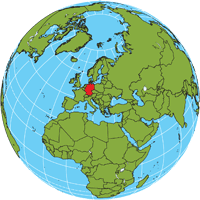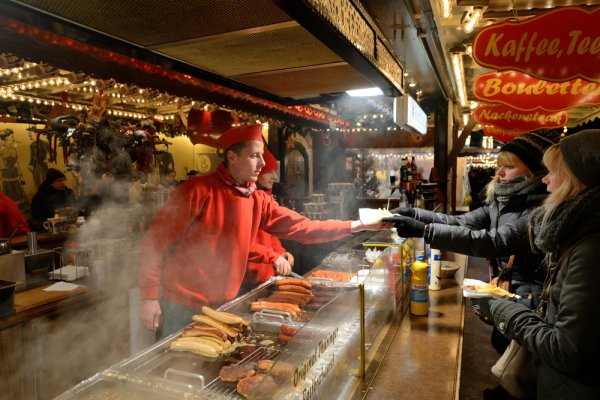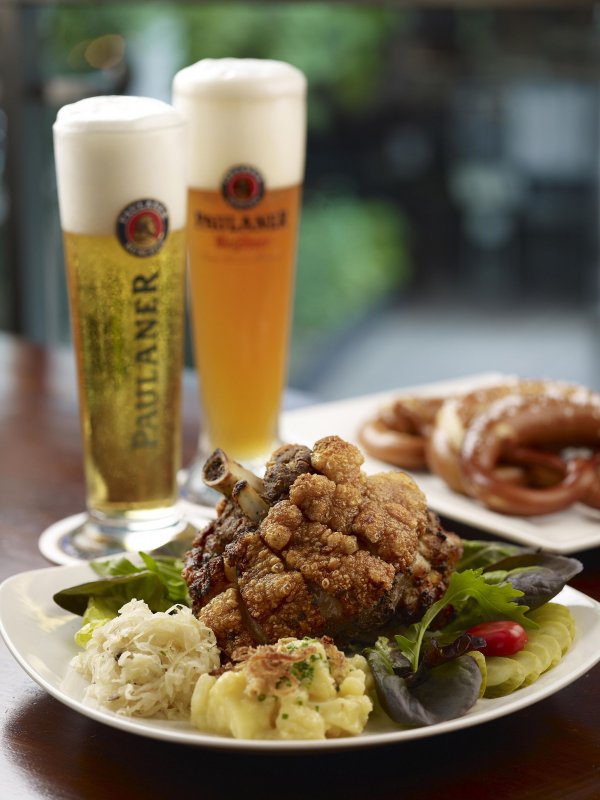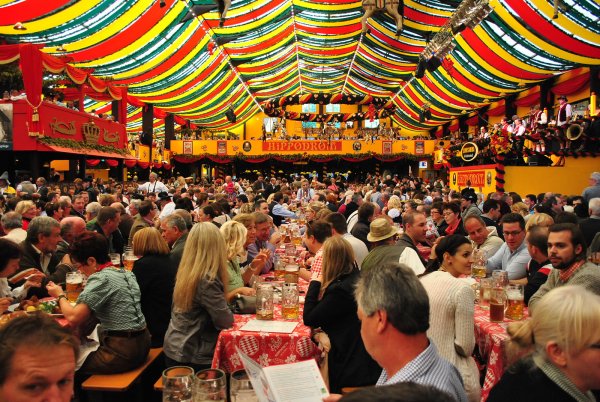Food and Drink: National Cuisine
German cuisine bears more resemblance to its neighbors to the east than to French or Italian fare. Climate has historically been a strong influence on common foods. Since winters are generally long and harsh, preserved meats, root vegetables, and pickles come to the fore. Most traditional meals, including breakfast, center on meat. Beef and pork serve as the most common main courses, though chicken is popular and certain types of fish are also widely eaten. Cured meats may be eaten cold or boiled while fresh meat is generally roasted or stewed. Vegetables generally appear as side dishes, not main courses, and are often seasoned with stock, sausage, or ham.
Common Ingredients
Cabbage, potatoes, carrots, beets, cucumbers, kale and other cold–weather leafy greens, and root vegetables are common. Pickled cabbage, called sauerkraut, was traditionally a daily food for many Germans, and today it remains a common side dish. Simply cooked foods remain popular. Potatoes are a regular side dish, and although more elaborate potato dishes exist, they are most commonly boiled and seasoned with salt and perhaps a little butter and parsley. Wheat–based bread is also very widely consumed and served with almost every meal. White bread in the form of buns is popular at breakfast with jams or at lunch or dinner with cold cuts, but rye and whole–wheat breads are also common, as are breads with sesame, pumpkin, or sunflower seeds.
Spicy foods are not traditional in Germany, though many dishes are flavored with herbs such as parsley, bay, thyme, and marjoram. Celery and lovage are also typical German seasonings. Other spices typically used in very small quantities include black pepper, allspice, juniper, nutmeg, cloves, and cinnamon. Onions, leeks, and chives are also traditionally used. Tart flavors are common, and vinegar is often a flavoring in both meat and vegetable dishes.
Fruit is consumed in season, and frequently used as an ingredient. Apples, for example, are regularly cooked with cabbage or made into apple strudel. Cherries, plums, apricots, and other soft fruits are also common during summer months and are used in cakes, tarts, gelatin desserts, and even in some savory dishes.
Traditional Practices
In general, appetizers are not normally served ahead of a meal. Formal dinners may have a Vorspeise (starter) included on the menu, which usually comes in the form of soup or melon and thinly sliced ham pieces. As such, German dinner parties traditionally go straight to the table without a "cocktail" hour. If drinks are served before a meal, one can expect wine or champagne, or champagne with orange juice.
As for meal hours, traditionally, farmers needed energy to work the fields, so the heaviest meal was consumed at noon. Still today, people will eat their biggest meal at noon and leave dinner for lighter fare like soup, open–faced sandwiches with cold cuts, and black or fruit tea. Eggs and fried potatoes may also appear at dinnertime. A lighter meal at dinner is considered healthier as the body can then rest instead of digest at night. Desserts are less common in Germany following meals, but appear rather at Kaffeestunde (coffee hour) around 4 pm at coffee shops and at Kaffeeklatsch (coffee gatherings) in homes.
Copyright © 1993—2025 World Trade Press. All rights reserved.

 Germany
Germany 



